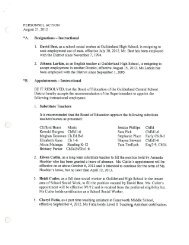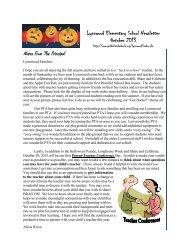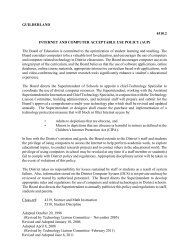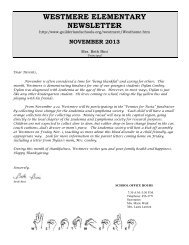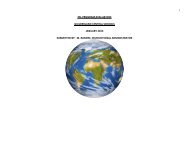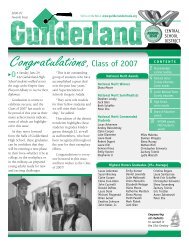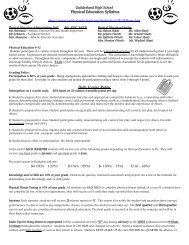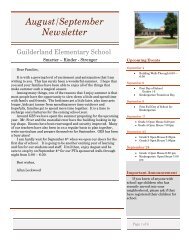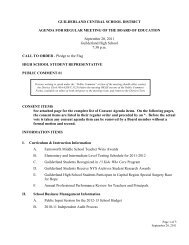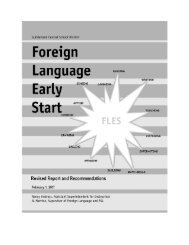Printable Copy of the Field Study Guide (PDF)
Printable Copy of the Field Study Guide (PDF)
Printable Copy of the Field Study Guide (PDF)
Create successful ePaper yourself
Turn your PDF publications into a flip-book with our unique Google optimized e-Paper software.
2) (a) Using <strong>the</strong> data from your chart on <strong>the</strong> previous page, and <strong>the</strong> Earth<br />
Science Reference Table page 6 “Relationship <strong>of</strong> Transported Particle Size to<br />
Water Velocity” graph, determine <strong>the</strong> size <strong>of</strong> <strong>the</strong> sediment <strong>the</strong> stream could carry<br />
at locations A and B. Record both sizes below:<br />
Size <strong>of</strong> particle that should be carried in location A: _________ cm<br />
Size <strong>of</strong> particle that should be carried in location B: _________ cm<br />
Draw to scale a sediment with <strong>the</strong> maximum size that could be transported at<br />
Location A and Location B in <strong>the</strong> space below<br />
Location A<br />
Location B<br />
(b) Using a ruler <strong>the</strong> students found pieces <strong>of</strong> sediment <strong>of</strong> <strong>the</strong> approximate<br />
sizes that <strong>the</strong> chart showed could be transported. They took <strong>the</strong> sediment<br />
samples to <strong>the</strong> stream, dropped <strong>the</strong>m in one at a time and observed what<br />
happened.<br />
Here are <strong>the</strong>ir results:<br />
Location A: Of two particles, one particle failed to move, <strong>the</strong> o<strong>the</strong>r bounced<br />
downstream along <strong>the</strong> bottom.<br />
Location B: Of two particles, one particle failed to move, <strong>the</strong> o<strong>the</strong>r rolled<br />
downstream along <strong>the</strong> bottom.



